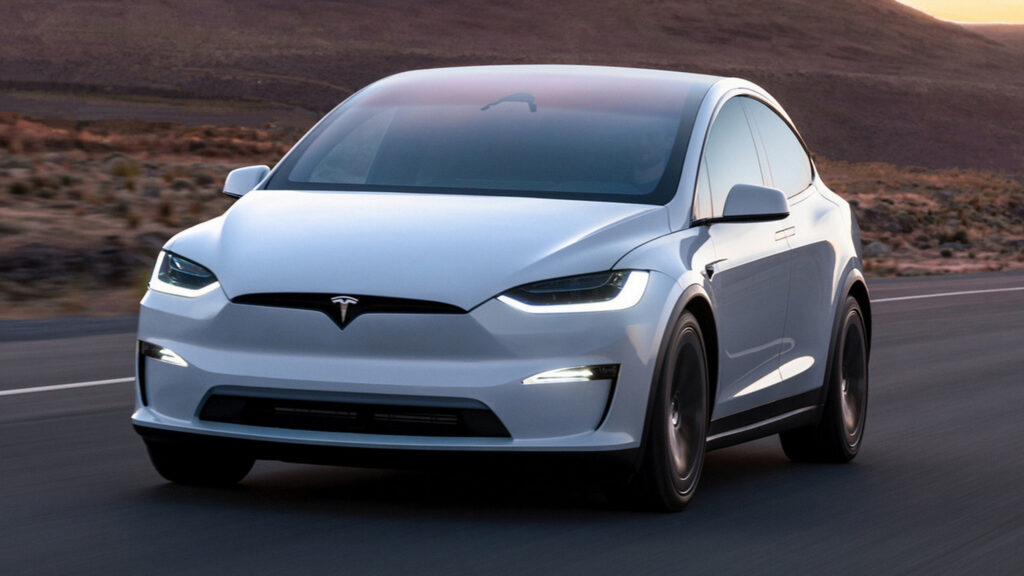
- EU may adopt U.S.-style self-driving car rules to reduce 25% tariffs
- Tesla stands to gain from looser European autonomous driving standards
- German automakers are pressuring Brussels amid collapsing U.S. sales
The European Union is weighing a shift in how it regulates self-driving technology, and it could mark a significant departure from its historically rigid stance. The move would be aimed at reducing mounting trade tensions, particularly with the United States, and it could reshape how automakers bring their semi-autonomous systems to market across the continent.
var adpushup = window.adpushup = window.adpushup || {que:[]};
adpushup.que.push(function() {
if (adpushup.config.platform !== “DESKTOP”){
adpushup.triggerAd(“0f7e3106-c4d6-4db4-8135-c508879a76f8”);
} else {
adpushup.triggerAd(“82503191-e1d1-435a-874f-9c78a2a54a2f”);
}
});
This is a big deal, considering that EU regulations are closely aligned with United Nations standards and widely seen as some of the most demanding in the world.
More: A Tiny Plastic Part Just Sparked Model Y Juniper’s First Recall
If the EU relaxes its regulations to conform to U.S. rules, the biggest change would be in how automakers qualify to use semi-autonomous driving in the EU. Right now, Brussels certifies which cars qualify via third-party testing. If the EU relaxes its regulations, it will allow automakers to self-certify. That’s what America does.
A Reversal of Longstanding Policy
This would be a dramatic about-face from the EU’s stance. A decade ago, Europe held to this standard, and it was a part of why a transatlantic trade deal fell apart. But, according to Politico, this is probably going to change. A person familiar with the situation says the proposal was part of a document sent to EU members on May 19.
Then, political leaders met with the CEOs of BMW, VW, and Mercedes-Benz to talk about it. Over what is described as an ‘hour-long video call’, the officials talked extensively about the 25 percent tariff on vehicle imports and car parts. The Donald Trump-instigated tariff war has changed the game for most automakers, and German brands are as affected as any.
Tesla’s Ongoing Regulatory Frustration
Meanwhile, Tesla has been banging its head against European red tape for years. Its semi-autonomous driving systems are heavily hobbled under current EU driving regulations. While it might be available to U.S. drivers just about anywhere, it’s limited to divided roads in the EU, where drivers won’t have to share the road with cyclists or pedestrians. Even then, it’s limited further to roads that allow speeds of 130 km/h (80 mph) or less.
var adpushup = window.adpushup = window.adpushup || {que:[]};
adpushup.que.push(function() {
if (adpushup.config.platform !== “DESKTOP”){
adpushup.triggerAd(“bb7964e9-07de-4b06-a83e-ead35079d53c”);
} else {
adpushup.triggerAd(“9b1169d9-7a89-4971-a77f-1397f7588751”);
}
});
While there’s no guarantee this concession will happen, it seems like a move that could hold sway with the Trump administration. Tesla and other automakers would have more freedom to stretch their self-driving legs. Even if the plan stalls, Tesla still has the advantage of a diversified global production footprint, which cushions the blow of any single region’s red tape.
var adpushup = window.adpushup = window.adpushup || {que:[]};
adpushup.que.push(function() {
if (adpushup.config.platform !== “DESKTOP”){
adpushup.triggerAd(“bb7964e9-07de-4b06-a83e-ead35079d53c”);
} else {
adpushup.triggerAd(“9b1169d9-7a89-4971-a77f-1397f7588751”);
}
});
